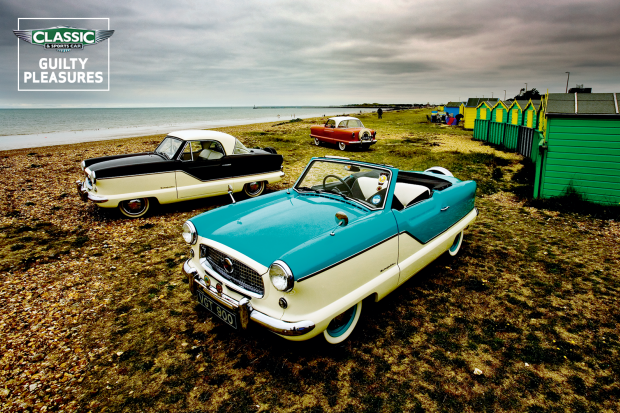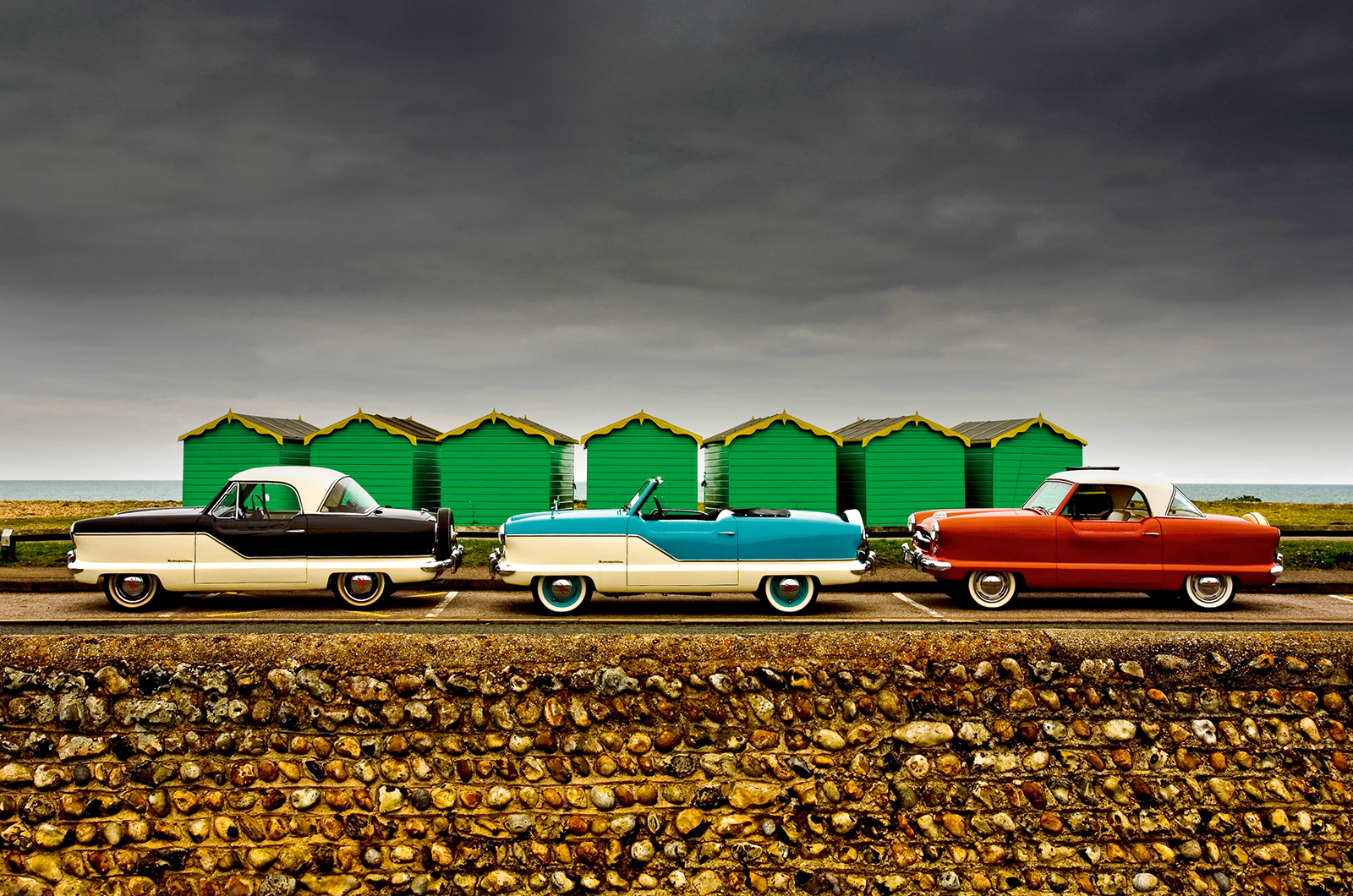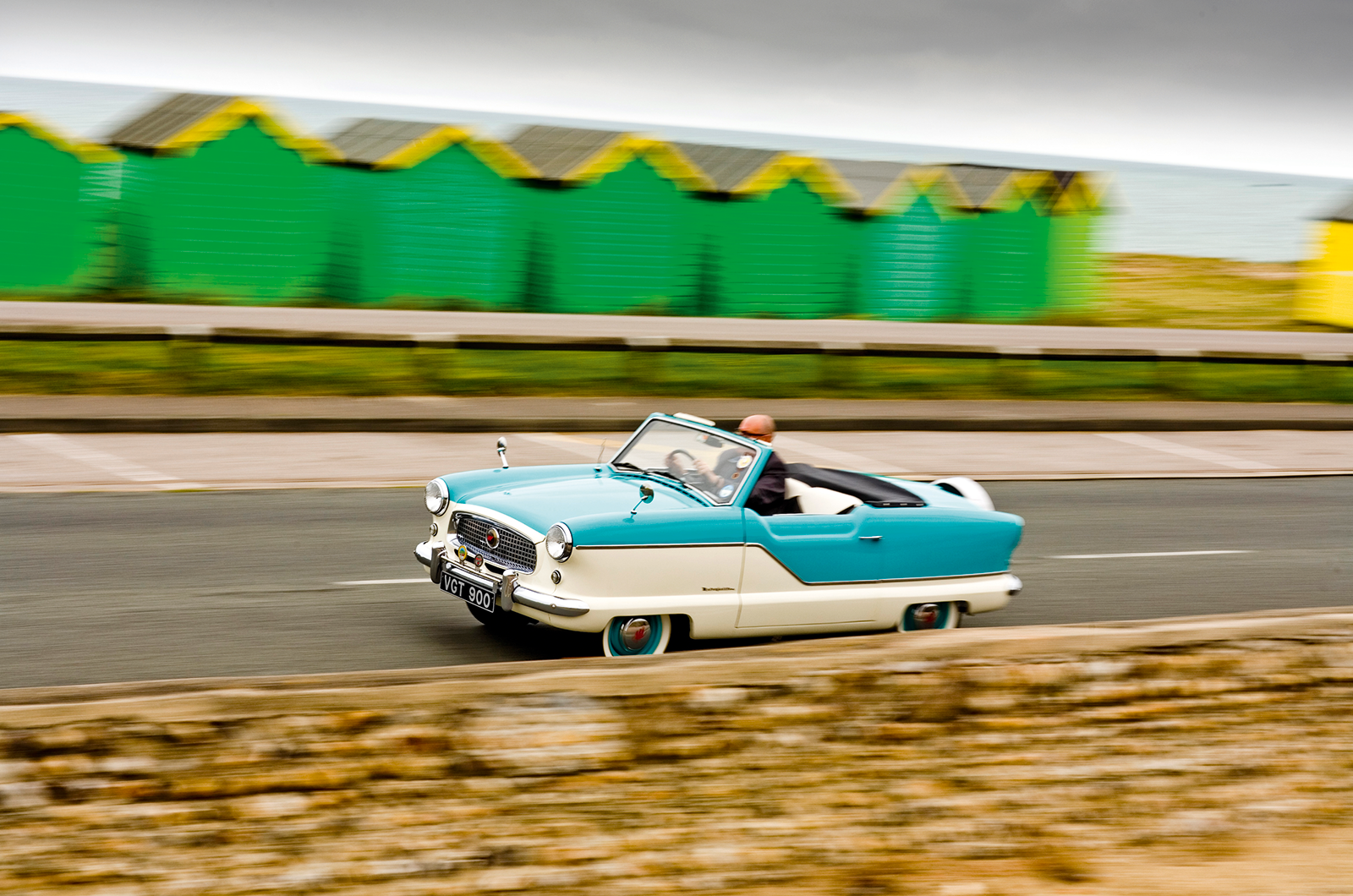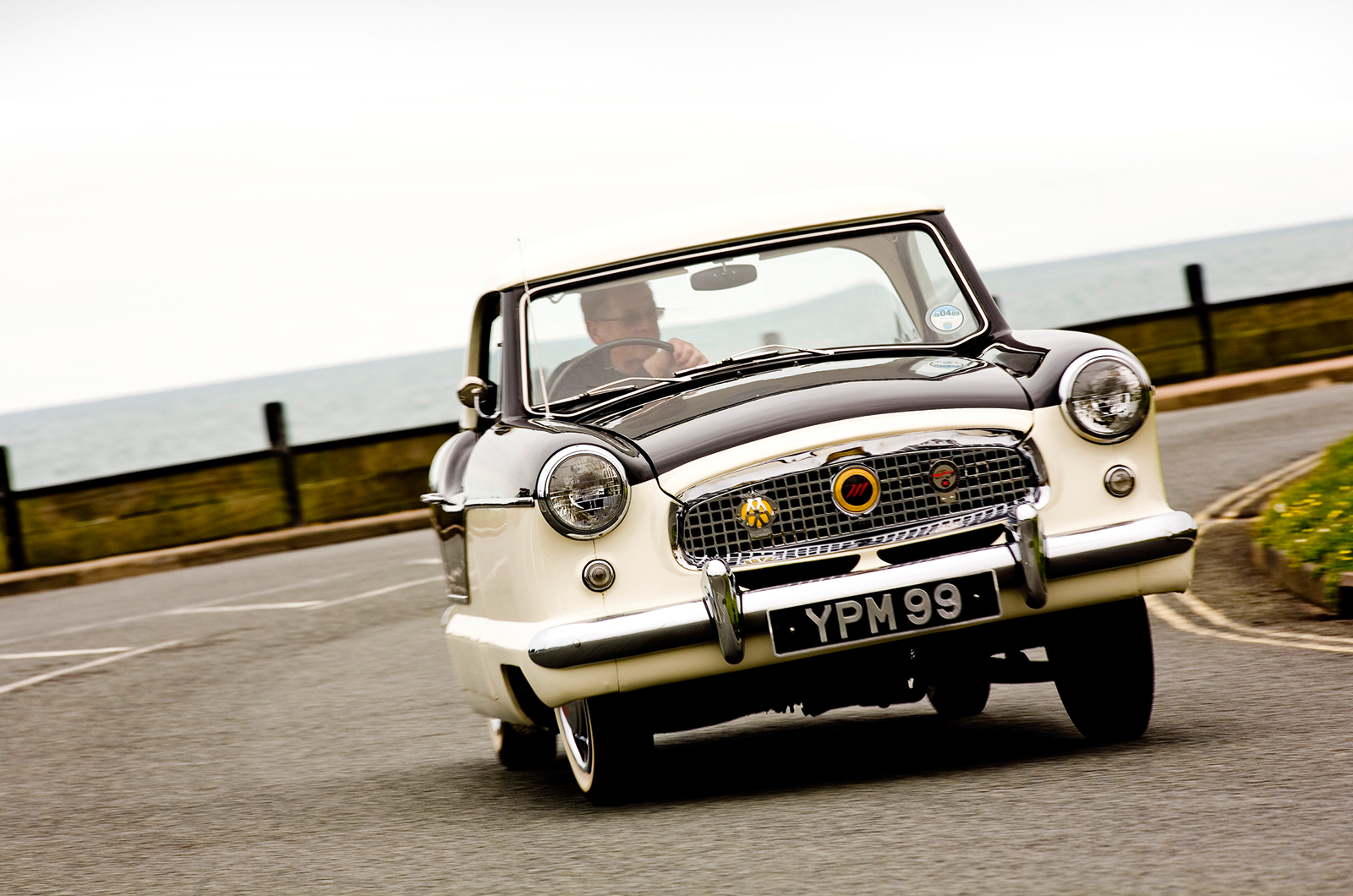
In what must be some sort of weird, inverted version of a midlife crisis, I like almost anything BMC these days.
Seriously – at an age at which most men start lusting after Ferraris and Lamborghinis, I’m dreaming about Austin Westminsters, A40s and all manner of other quaint vehicles from an era now so distant it almost seems like another planet.
I suppose what they have in common is that they’re all ‘Lost England’ cars: reminders of a time that probably only exists in the minds of people who (like me) hanker after the cosy certainties of the ’50s, without actually having been around to experience the ration-books-and-repression reality of the era.

“Built for a ’50s world of skiffle and Tommy Steele films…”
To be honest there are lots of BMC cars I would like to have before I get around to owning a Metropolitan, but to even admit to liking them feels like a profoundly guilty pleasure, so it suits the purposes of this column perfectly.



